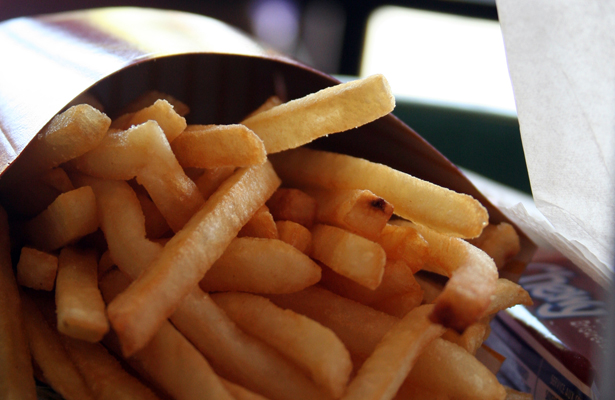New Technique for Assessing Calorie Absorption Sheds Light on Genetic Driver of Obesity

Researchers from Harvard, NC State and five other universities have found a specific genetic on-off switch associated with obesity in both mice and humans, raising the long-term possibility of developing new treatments for obesity. As part of the study, NC State researchers had to develop a new technique for assessing calorie absorption in small laboratory animals, which can be used in future studies of metabolism.
A paper describing the research, “Loss of Function of the Melanocortin 2 Receptor Accessory Protein 2 Is Associated with Mammalian Obesity,” was published in Science July 18.
At issue is a protein called Mrap2, which activates genes by plugging into receptors on those genes – like a key in a lock. The researchers found that in animals where Mrap2 is no longer able to activate genes (i.e., the key no longer works), the animal gains significant weight. The study found this to be true in both mice and humans.
In the portion of the study that evaluated the role of Mrap2 in mice, the researchers found that two things happen when Mrap2 is not functioning normally. First, the mouse begins storing more of its calories as fat, which causes it to gain weight. Second, after 50-60 days, the part of the mouse’s brain that normally tells it when it has eaten enough stops functioning properly. As a result, the animal eats more, exacerbating the weight gain.
During the study, researchers at Harvard wanted to know why the animals were gaining weight in the period before they started eating more. The mice with malfunctioning Mrap2 proteins were eating the same amount as other mice, but were gaining weight. Was this because the obese mice were absorbing more calories from the food? Or were they absorbing the same number of calories, but using the energy differently?

The Harvard researchers contacted Dr. Peter Ferket, an expert on nutrition and metabolism of poultry at NC State. As part of his research, Ferket regularly assesses the amount of energy (or calories) in feed and how this energy is used by poultry. “Energy density” in feed or excreta is measured in terms of calories per gram. Ferket can give a specific amount of feed to a chicken and then assess the calories per gram of the chicken’s bodily waste. The difference between what goes in and what comes out is called metabolizable energy. The Harvard researchers wanted Ferket to do something similar with the feed and waste from their lab mice.
But this posed an interesting challenge for Ferket, because birds and mammals excrete waste differently. Birds excrete all their waste together, whereas mammals excrete feces and urine separately – making it difficult to collect all of the waste and assess metabolizable energy. So instead, Ferket opted to assess digestible energy, which is the difference between feed intake and fecal output. That would still give the researchers key insight into the animal’s energy balance and the cause of weight gain in the mice whose Mrap2 proteins weren’t functioning normally.
However, when the Harvard researchers sent Ferket samples of the mouse feces, there was a problem. The amount of fecal sample per mouse was so small that traditional methods for assessing caloric value were inadequate. So Ferket had to create a new method.
The standard method for assaying caloric density in chicken waste uses a machine called a bomb calorimeter. You put one gram of waste into a metal cylinder, flood the cylinder with oxygen and then ignite the waste with a fuse wire. Because the cylinder is an oxygen-saturated environment, the waste burns completely. Researchers can measure the resulting increase in temperature to determine the caloric density of the waste – every degree Celsius in temperature rise equals one calorie.
But the lab mouse feces came in pellets the size of rice grains that weighed milligrams – not even close to the one gram sample size needed for a bomb calorimeter.
To get around the problem, Ferket used wheat flour. He measured the exact caloric density of wheat flour, and by using a specific amount of flour to bulk up the sample size, he could calculate the caloric density of the mouse feces.
“For example, assume we determined that one gram of flour contains 4,000 calories,” Ferket says. “So if we combined 950 milligrams of flour and 50 milligrams of feces, and the combined sample produced 3,900 calories in the bomb calorimeter, we could use simple mathematics to calculate the caloric density of the feces to be 2,000 calories per gram.
“We developed this technique out of necessity, and had it validated by an outside lab, but it can now be used by anyone for future studies on diet and metabolism – any time you have a limited sample size.”
- Categories:


